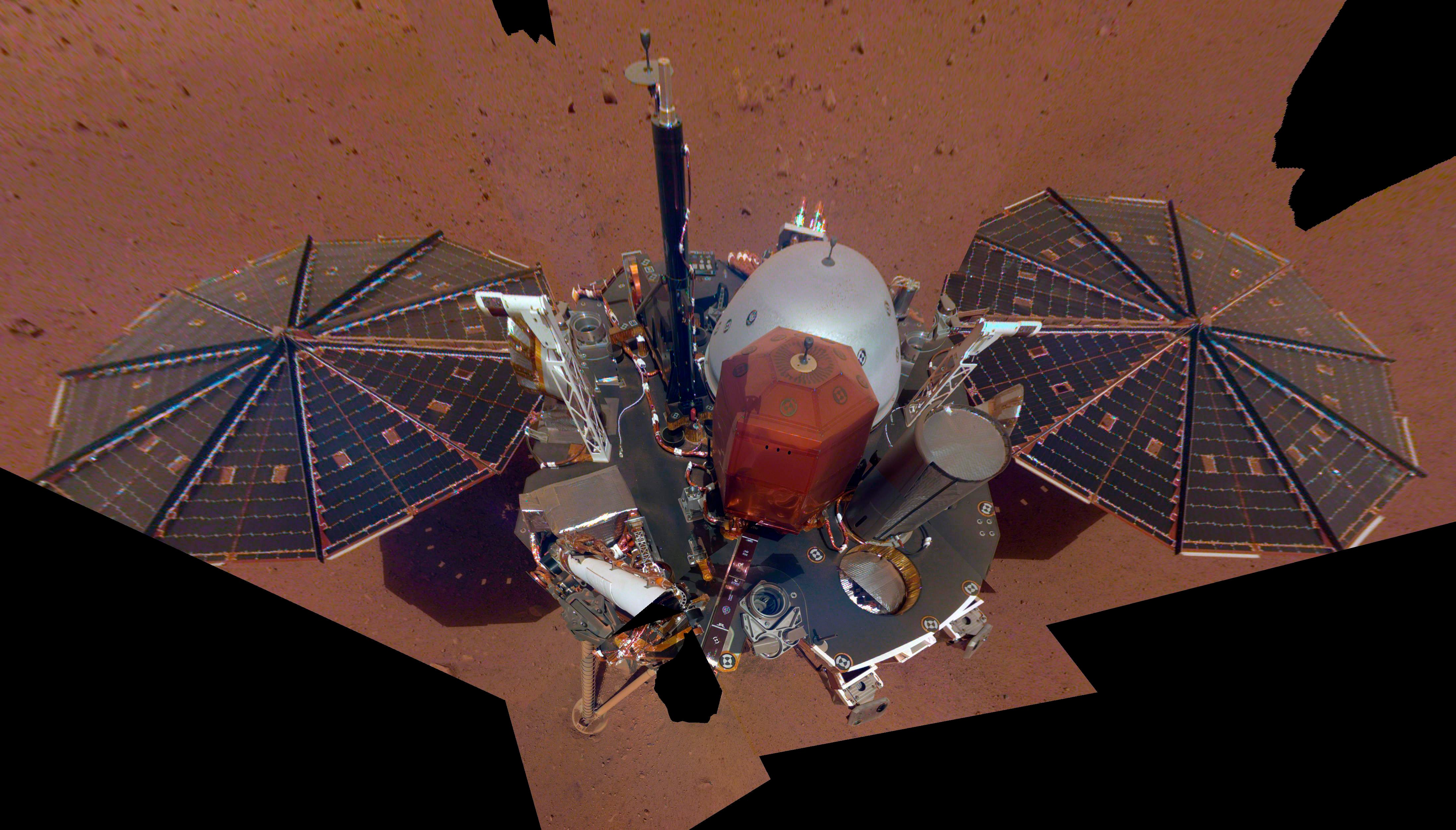Nasa’s InSight lander posts its final selfie in Red Planet farewell
Nasa is preparing to retire the Insight lander after nearly four years for ground breaking science on Mars

The Nasa InSight lander has taken its last selfie on Mars, a bow before signing off from the Red Planet forever.
On Monday, Nasa’s Jet Propulsion Laboratory (JPL) posted an animated image on Twitter comparing the first image InSight took of itself in December 2018, and what appears to be the last, taken on 24 April this year. The robotic arm used to take the images will soon be placed into its resting position for the final time, a configuration known appropriately as “retirement pose.”
The amount of red dust covering the lander’s seven-foot-wide solar panels in the last photo is hard to miss, and the reason why JPL, the Nasa center responsible for the InSight mission, is planning on retiring the lander by later this summer: It’s slowly suffocating.
“When InSight landed, the solar panels produced around 5,000 watt-hours each Martian day, or sol — enough to power an electric oven for an hour and 40 minutes,” a recent Nasa blog noted. “Now, they’re producing roughly 500 watt-hours per sol — enough to power the same electric oven for just 10 minutes.”
While a sad end to an instrument that could otherwise continue doing science, it’s not an untimely end for the InSight lander, which achieved its main mission goals within two years of landing on Mars on 26 November 2018. Nasa extended its mission through December 2022 back in January 2021, making all that’s come since gravy on top of an already successful Mars mission.
InSight carried a seismometer to Mars to help understand the geological activity and internal structure of the Red Planet. It has recorded more than 1,300 Mars-quakes since landing in 2018, including the most powerful quake ever recorded on another planet, a magnitude 5 tremor on 4 May.
InSight’s seismometer readings not only established Mars as a geologically active planet, it gave scientists an all new picture of the Red Planet’s internal structure, confirming Mars contains a large, liquid metal core. Scientific findings that will continue to fuel further exploration of Mars — and the Solar System — long after Insight switches off of good later this summer.
“InSight has transformed our understanding of the interiors of rocky planets and set the stage for future missions,” director of Nasa’s Planetary Science Division Lori Glaze said in a statement. “We can apply what we’ve learned about Mars’ inner structure to Earth, the Moon, Venus, and even rocky planets in other solar systems.”
Subscribe to Independent Premium to bookmark this article
Want to bookmark your favourite articles and stories to read or reference later? Start your Independent Premium subscription today.

Join our commenting forum
Join thought-provoking conversations, follow other Independent readers and see their replies